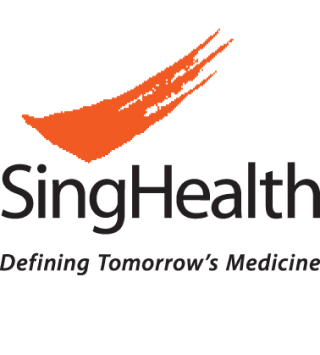KK Women's and Children's Hospital will NEVER ask you to transfer money over a call. If in doubt, call the 24/7 ScamShield helpline at 1799, or visit the ScamShield website at www.scamshield.gov.sg.

Even though the prevalence of familial hypercholesterolaemia is one out of 140 Singaporeans, it is often underdiagnosed. Find out when general practitioners should suspect the genetic condition so that timely treatment can be initiated – a make-or-break factor in lowering associated cardiovascular disease morbidity and mortality for this at-risk group.
THE KKH CHILDREN’S LIPID CENTRE
KK Women’s and Children’s Hospital (KKH) has opened the new Children’s Lipid Centre, Singapore’s first dedicated clinic for the management of familial hypercholesterolaemia (FH) in children. Part of the Metabolic Health Programme, under the KKH-led SingHealth Duke-NUS Maternal and Child Health Research Institute (MCHRI), the Centre will proactively identify and manage FH in early childhood.
WHAT IS FAMILIAL HYPERCHOLESTEROLAEMIA AND HOW COMMON IS IT?
Familial hypercholesterolaemia (FH) is one of the most common genetic disorders, with a global prevalence of one in 313 people. It is even more common in Singapore, where the estimated prevalence is one in 140 people.
FH leads to elevated levels of low-density lipoprotein cholesterol (LDL-C), often referred to as ‘bad cholesterol’.
UNIQUE CONSIDERATIONS OF FH MANAGEMENT IN CHILDREN
FH in childhood can manifest more severely and require targeted diagnosis and aggressive treatment, unlike FH in adults which can be managed by statins and lipid-lowering drugs.
Of greater concern is the fact that FH in childhood can also be insidious and stay silent until cholesterol levels are actually measured. Being genetic, FH cannot be addressed by dietary and lifestyle changes alone.
As the risk of atherosclerosis is cumulative and starts early in life, early detection for children at risk of this genetic condition is crucial. For instance, the first two years of life is key to the diagnosis of Homozygous FH (HoFH), a more severe form of FH which is inherited from both parents.
PREVALENCE IN SINGAPORE
The prevalence of FH in Singapore is around one in 1401 or over 35,000 persons, including 4,000 children and adolescents. Yet over 90% of FH cases in Singapore remain undiagnosed or do not receive timely treatment, especially in children and adolescents.
PRESENTATION
- Children with untreated FH typically have LDL-C levels of at least 3.5 mmol/L.
- Those with LDL-C over 4.0 mmol/L would require early LDL-C lowering treatment since they remain asymptomatic while the silent effects on the vascular endothelium build over time.
- The optimal LDL-C for children aged two to 18 years is less than 3.5 mmol/L.
Precision Population Health Through Screening and Early Detection
Early screening for at-risk children
The Children’s Lipid Centre encourages early screening for at-risk children to limit the risks of lifelong cholesterol build-up and related diseases.
They include children whose immediate family members have FH, or a history of developing cardiovascular disease earlier in life. For women, it would be before 65 years, and for men, before 55 years.
Importantly, a child’s diagnosis can often lead toidentifying and treating an affected parent or family member.
In managing children diagnosed with FH, the Centre will focus on individual characteristics and General practitioners are invited torefer at-risk patients for screening by scanning the QR code.genomics to administer tailored therapy, at the right time, for each affected child.
The KKH Children’s Lipid Centre is expected to screen and manage around 120 children annually.
Reducing the cardiovascular disease burden
FH in adulthood carries a 50% chance of the condition being passed down to the next generation.
Individuals with FH are potential time bombs, unaware of their condition until it manifests into serious health issues. For those affected, this can be addressed with early screening and intervention.These are also the first steps toward realising a future of a population free from cardiovascular disease.
Stay Healthy With
© 2025 SingHealth Group. All Rights Reserved.
















